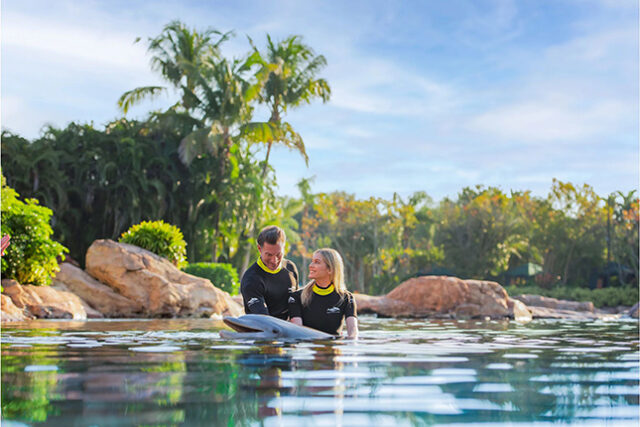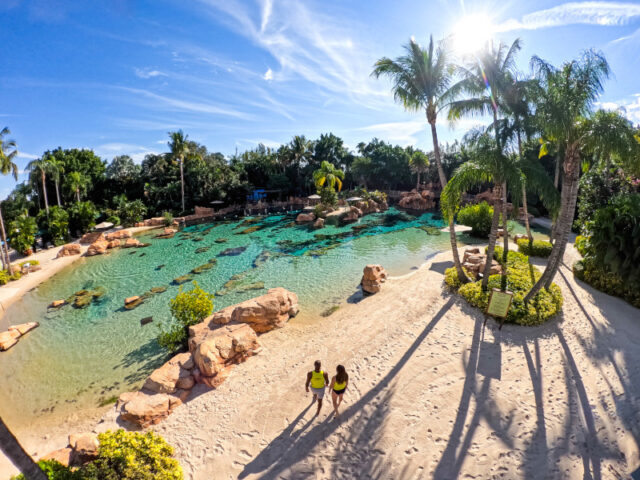New research conducted at SeaWorld aims to help scientists answer a long-standing question: What is the resting metabolic rate of a killer whale? The answer to this seemingly basic question may upset conventionally held beliefs about the impact of killer whales, an apex predator, on their environment, and help biologists make more informed management decisions for endangered killer whales in the wild.
Scientists from Hubbs-SeaWorld Research Institute and SeaWorld worked with Tilikum, a killer whale atSeaWorld Orlando and the largest marine mammal living in a zoological park, to obtain the whale’s basal metabolic rate (BMR) by measuring his resting oxygen consumption rate. BMR is an indirect measurement of the energy an animal requires to sustain itself in a resting state. To collect the data a flow-through metabolic dome was placed over Tilikum’s blowhole to measure how much oxygen he extracted from the incoming air. SeaWorld training staff worked with Tilikum three months prior to the study to ensure he would be comfortable with the dome.
“The study of energetics in marine mammals, particularly killer whales, is central to our understanding of the animal’s role in its ecosystem,” said Dr. Graham Worthy, Hubbs-SeaWorld Research Institute scientist and the study's principal author.
It all boils down to how the animal keeps its internal ‘furnace’ burning.
“If a whale or dolphin requires more energy to live than their land-based counterpart, then we would expect them to eat more.” Previous mathematical models have estimated that large dolphins, like killer whales, require a metabolic rate that is double that of an equal sized land mammal in order to survive in the cold ocean. “Our study suggests that is not true. Killer whales appear to have a metabolic rate that is the same as would be expected for a land mammal of equal size.”
This new information suggests that killer whales might only eat half as much food as some previous models have predicted. And since killer whales eat fish, as well as other marine mammals, this has implications not just for killer whale conservation, but for many other animals in that ecosystem. The results of the study were published recently in the online edition of Marine Mammal Science.
Prior to this study most direct assessments of metabolism in cetaceans focused on smaller species such as bottlenose dolphins and that data was extrapolated to develop mathematical models for larger cetaceans. Inappropriate assumptions can have a significant effect on estimating food requirements of animals. The research illustrates the scientific and conservation value of studying both whales housed in zoological parks, as well as those in the ocean.
“You cannot make informed decisions about the conservation of a species without both sides of the equation,” said Worthy. “The access to the whales at SeaWorld allowed us to gain critical data that would be impossible to collect in the field due to the size and inaccessibility of a killer whale.”
“This study speaks to SeaWorld’s larger commitment to conservation and animal welfare by providing an environment to safely conduct detailed research,” said Dr. Christopher Dold, Vice President of Veterinary Services for SeaWorld Parks & Entertainment and a co-author of the study.
About Hubbs-SeaWorld Research Institute
Hubbs-SeaWorld Research Institute, founded in 1963 to conduct research in the tradition of world-renowned scientists Dr. Carl L. and Laura C. Hubbs, is a public, non-profit charity dedicated to providing effective solutions to conflicts that arise between human activity and the natural world. Hubbs-SeaWorld scientists apply sophisticated technologies to seek the solutions that protect and conserve marine animals while benefiting humans and their reliance on marine resources. The Institute also recognizes the critical importance of scientific literacy as a foundation for competing in the highly technical and competitive global economy and strives to provide innovative education programs to promote scientific literacy among our children and young scientists. In 2013, HSWRI celebrates 50 years of its mission "to return to the sea some measure of the benefits derived from it."
Back to news

